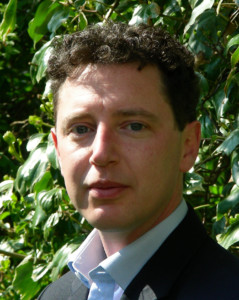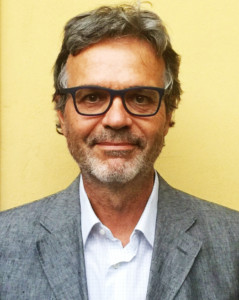Read in the following a guest commentary by Francesco Degli Innocenti and Tony Breton from the European Bioplastics Working Group Standardisation. The authors’ opinion on Spaghetti and Currywurst does not represent EUBP’s official position on Mediterranean and German dishes.

Tony Breton, EUBP Working Group Standardisation

Francesco Degli Innocenti, EUBP Working Group Standardisation
Headlines have never been so important. Scroll, stop, to click or not to click the title is what convinces us to open the content. Even in scientific journal articles, the title and the few lines of an abstract have developed a clickbait habit. Universities competing for students and funding are looking for visibility, researchers for well-deserved professional satisfaction and journals are judged by their “impact factor”.
Understandably, if there is competition, a little publicity is needed. The electronic age has brought science to the mainstream. Mainstream doesn’t do dull. Mainstream demands shock. Passing from one blog to another, the title gets modified; the message is simplified and crystallized, becoming a fact, scientifically established by consensus based on the number of clicks and shares. Moreover, the adverb “scientifically” cuts out any discussion. Few check the source, even fewer read the whole article and very few have the skills to enter into its merits. We have returned to the days of “ipse dixit”.
Recently a group of researchers from the University of Frankfurt published the article “Are bioplastics and plant-based materials safer than conventional plastics? In vitro toxicity and chemical composition”. The answer to this rhetorical question is bioplastics and plant-based materials are as toxic as conventional plastics. More generally, rhetoric is a tool widely used by politicians and not recommended in scientific articles. When reading the article, one can notice that there is a gap between the title and the content. In fact, the title is about safety, but the article does not provide enough data to address chemical safety. The article justifies the genesis of the demand as the bioplastics industry advertises its products as “more benign” than conventional plastics. This is another logical fallacy, a “straw man argument”.
The goal of the bioplastics industry is to make truly biodegradable and / or bio-based products. In the case of “safety” i.e. safety of food contact (FC) materials, bioplastics like all materials comply with the laws and regulations in force. Nobody is involved in a competition to gain the status of “less toxic”. There is no ranking. Compliance is a binary condition: yes or no. By ascribing this ambition of “less toxicity” and then immediately “proving” it to be false, the authors create a general discredit. The reader is left with the impression of an unreliable industrial sector. This step is another logical fallacy, called the “poisoning of the well” (… which fits perfectly, speaking of toxicity).
The study is actually an interesting attempt to expand the testing techniques applied to FC materials (that could be proposed, when validated, to the European authorities). However, its conclusions are unacceptable because the preliminary, invalidated method and results are designed to exclusively discredit one single class of materials. The authors could never have declared that “bioplastics are as unsafe as conventional plastics”, because they were aware that they do not dispose over the necessary level of scientific expertise to make such a statement (“expertise on both i.e. hazard and human exposure… is required to arrive at a risk-based assessment”). However, still they launched the message. The well was poisoned.
It is not surprising that many substances are obtained with extractions such as those applied by the authors. However, this result is not a specificity of bioplastics or plastics. The same plethora of “peaks” can be obtained from all packaging (e.g. paper, cardboard, wood) and indeed anything. It remains to be understood if these findings are relevant for “safety” or not. By using appropriate solvents and treatments, many chemicals could be extracted from foodstuffs such as spaghetti and many of these, if tested at high doses, could show negative effects on the test organisms. If fewer substances would be extracted from sausages, would we conclude that the alleged superiority of the Mediterranean diet is false? It could turn out that despite its appearance the Currywurst is not as toxic as Spaghetti.
And finally, dear readers, you understand the title, provocative and misleading, which has allowed us to keep your interest up to this point.